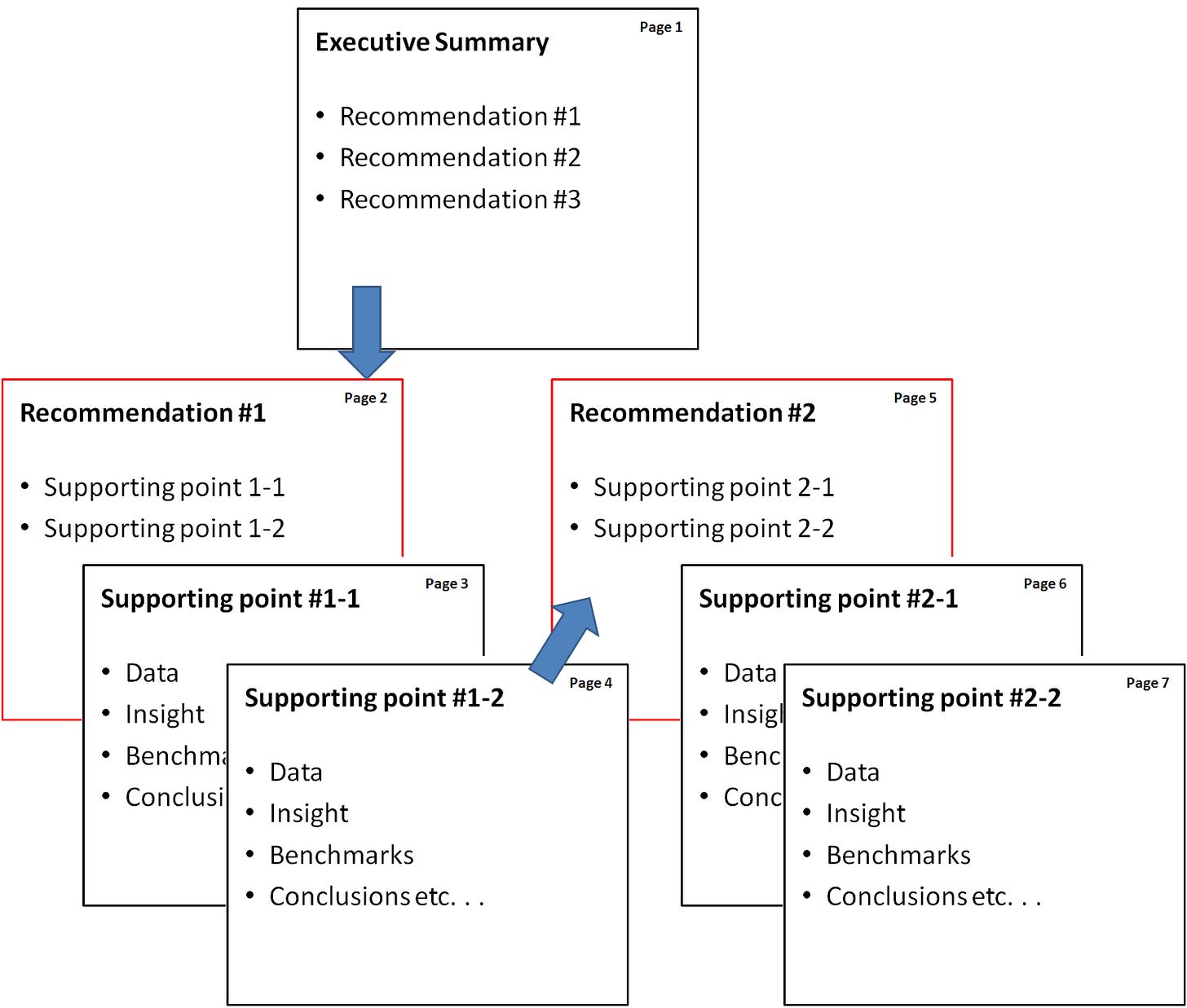So you need to write that essay, and don’t know where to start. Or, your partner wins every argument with logic and you need a tool to fight it back. Or! Your boss has asked you to present the firm’s recommendations to new clients and stakeholders.
What do do? Just go about writing down anything that comes to mind?
Maybe, there’s a better way…
What is the Minto Pyramid Approach?
The Minto Pyramid Approach, or principle, is a technique for organising and processing massive volumes of data in order to communicate a story, message, or presentation without leaving out crucial facts.
All by being as engaging as possible.
After the thesis statement has been established, the Minto Pyramid Principle is used to structure points and arguments. Following that, the material is given in a straightforward and intelligent manner, branching out to detailed topics.
In short, you find one overarching argument/question (or takeaway/recommendation) and branch down to supporting arguments. These are still general, but must be mutually exclusive. Lastly, for each supporting argument, you may present all findings.
First Step: issue , thesis or key point
The Minto Pyramid Principle reverses the typical way of reaching a conclusion. In most cases, a book or presentation’s conclusion comes after all of the facts have been provided and all analyses and supporting concepts have been considered.
Barbara Minto explains why the solution is first delivered in a clear and tangible manner using her McKinsey Pyramid Principle. The supporting justifications or motivations must be supplied only after that. The first reason is to make the best possible use of the audience’s limited time.
So yes, you start with the “in conclusion”, the “so what?”.
Second Step: supporting arguments
Now that the main point has been established, it’s time to explore the justifications, reasons, or motive for presenting the presentation. This level, according to the Minto Pyramid Principle, is about connecting all of the arguments into primary ideas. Each point gives a summary of particular support for the first step’s recommendation or answer.
Third Step: present supporting information and thoughts
The pyramid then branches out from each argument to the lowest level, where supporting information and concepts must be offered to demonstrate the validity of the stated arguments. The pyramid structure is made up of all three layers.
Always start with the most important concept at the top of the pyramid. By paying attention to the structure and sequence of the tale, clarity and logic may be applied.
If the arguments and concepts presented have a certain flow, frequency, or cause-and-effect structure, they must be organised chronologically. It’s also a good idea to start with the most crucial points and thoughts.
Example
Avo is the best.
Why? She is kind, smart, and cool.
Supporting arguments. For example, what proves that she is smart? She writes on medium, she has glasses, she did not fail elementary school.
Why is she cool? She has a pet fish.
When does it work?
The concept may be applied to any situation. When you need to write anything, make a recommendation, or give a presentation. Even in your disputes with your partner.
The idea is mostly used in management consulting and business recommendations. It’s not hard to understand why. It gets to to the point, is straightforward, and the major point is almost certainly the one that people will remember.
Here, a schematic view on how the Minto Pyramid is utilised in consulting:







